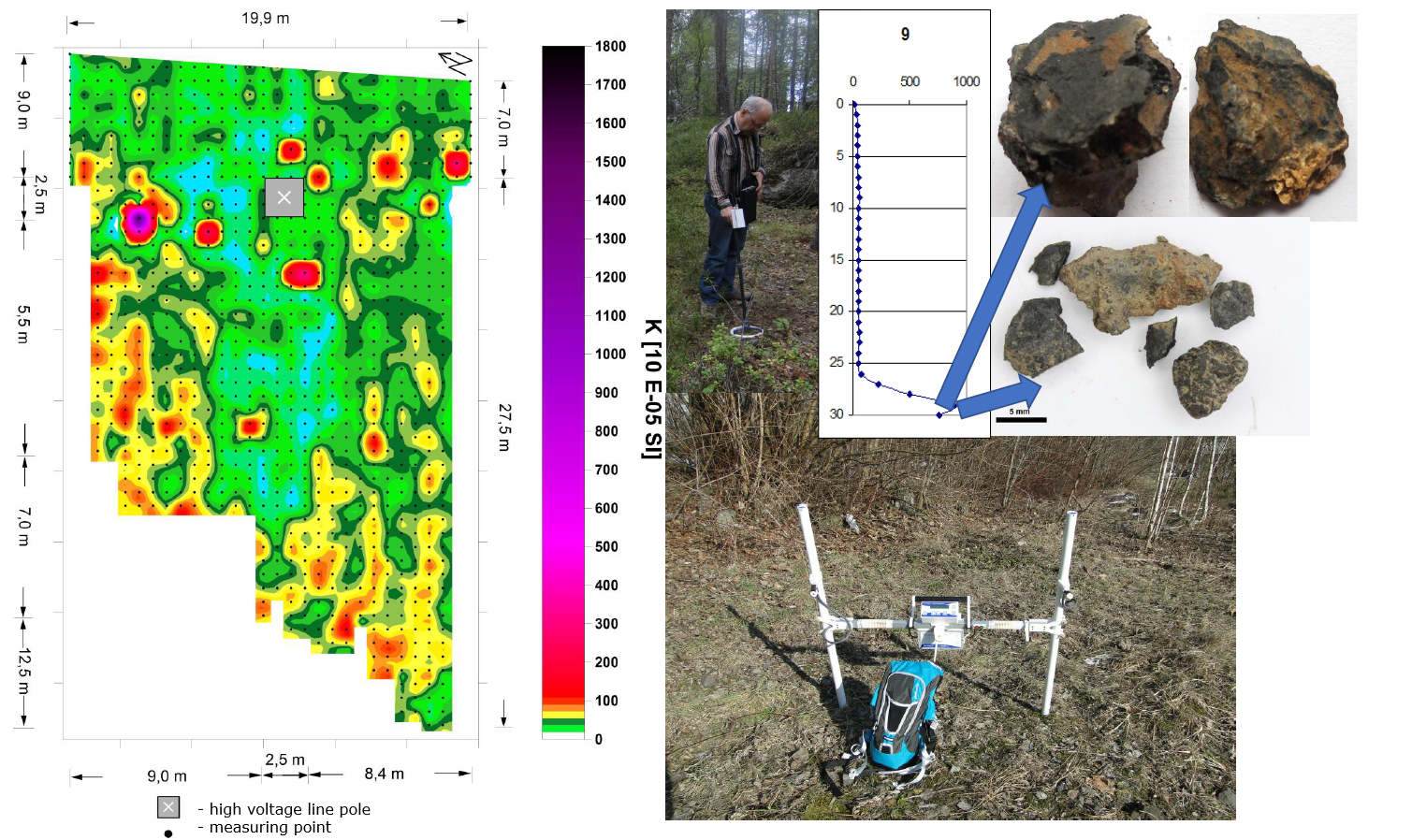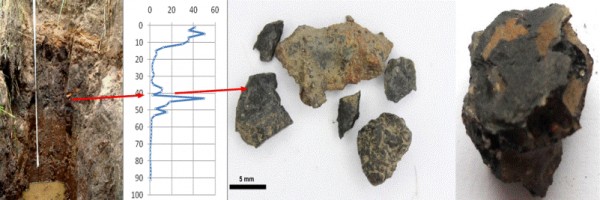The region of Tarnowskie Góry and Miasteczko Śląskie was one of the centres for the exploitation of silver and lead ores as well as for the exploitation of bog iron ore in the period from the 13th to the 17th century. Traces of this exploitation can be found in the soils and peat bogs of the Brynica and Stoła valleys. The possibility of using the method of soil magnetometry in the research area is related to the fact that all metallurgical processes (including primitive ones) form "technogenic magnetic particles" (TMPs), which have ferromagnetic properties and whose presence in the soil or peat layer can be detected using simple techniques of soil magnetometry. The main objective of the project was to determine the chemical composition, morphology and mineral forms, as well as the magnetic properties of historical TMPs and to compare them with the TMPs emitted into the atmosphere in recent decades, as well as to identify the nature of the magnetic anomalies occurring in the Brynica and Tables valleys. Field measurements of magnetic susceptibility (in the upper soil layer up to 10 cm) and gradiometric measurements (to a depth of 1 m) made it possible to precisely locate the sites of soil magnetic anomalies, and analysis of the vertical distribution of magnetic susceptibility values measured in the collected soil cores made it possible to locate the soil layer where they occur. TMPs. Morphological, mineralogical and chemical analyses of about 100 TMPs showed that they are mainly particles of slags, ores, ceramics, coke breeze and charcoal encrusted on the surface with a layer of iron oxides, crusts covering sandstone fragments. The analysis of the content of heavy metals and the vertical distribution of magnetic susceptibility of peat profiles collected in the study area showed high correlations between the presence of metals such as Ag, Cd, Cu, Fe, Pb and Sn, the distribution of the magnetic signal and the presence of charcoal and radiometric dating. The dating also showed that the first visible increase in lead content was already visible in peat layers from around 1000 BC, and copper even in layers corresponding to the age of 2500 BC, which could indicate much earlier human activity in the area. In addition, magnetic measurements in the study area were used to determine the location of two archaeological sites from the Mesolithic and the Middle Ages, where initial archaeological work was carried out based on the research results.





